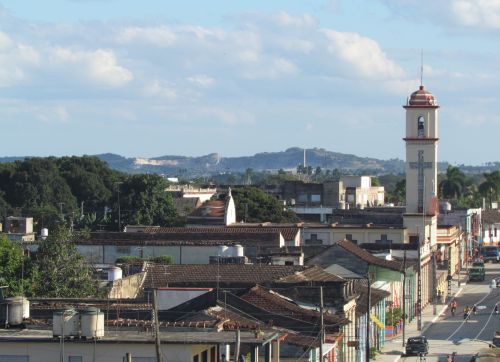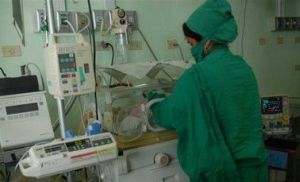 Although it’s known as the land of iguanas by some people, the truth is that the word Cabaiguán has not been proven to be linked to the presence of this animal.
Although it’s known as the land of iguanas by some people, the truth is that the word Cabaiguán has not been proven to be linked to the presence of this animal.
It was rather born from the aboriginal jargon subjugated by Spaniards five centuries ago in the later homonymous territory, transferred to Bartolomé Jiménez by the Cabildo of the Village of the Holy Spirit.
The future town would be started in the intersection of the roads to San Cristóbal de La Habana and San Juan de los Remedios, as it was confirmed by the Guía del Forastero, of 1814, and some 30 years later by Jacobo de la Pezuela, in his Diccionario geográfico, estadístico, histórico de la Isla de Cuba.
By the end of the XIX century, the emerging village had been already provided with a telegraph, a school, and due to the re-concentrations that took place during the two wars, a group of “guajiros” settled down by the Spanish fort, which safeguarded the pride of the metropolis.
The suburb would definitely flourish with the introduction of the railway, which connected the territory with the major ports of the country, and with the world. The need of labour force in the tobacco plantations allowed for the arrival of thousand immigrants from Canary Islands, who decided to establish themselves in Cuba.
According to local writer and researcher Mario Luis López Isla, in 1909 there was a typography workshop at Calle Valle (Valle Street), for the printing of El Heraldo newspaper. In that same year, the Colonia Española (Spanish Colony) Society was instituted. And in 1918, the Catholic Church was built.
The first film was shown in 1910 in the so called Didactic Cinema, and two years later, the Capirot family built a wooden theatre, which was provided with optimum acoustics.
By that time, the region was known all over Cuba as the town of boars, which is possibly its most notorious nick name. Popular tradition tells that José María, the drunk, was the one who invented the alias, which was related to the presence of these animals in the vicinity of the railroad station.
Cabaiguán was granted the category of municipality in 1926, thanks to the intervention of the Pro-council Committee, created in 1909. Likewise, several locals, such as Lebanese José Chamán, and engineer Manueal Coroalle, made it possible that Carretera Central road crossed the town, which was not planned in the beginning.
The Virgencita is a jewel of the local heritage, which identifies a popular corner of the municipality, located next to Serafín Sánchez Valdivia amusement park.
Yero’s Tower outstands as the only XIX century building in town. It was rescued in 2010 under the initiative of local Union of Writers and Artists of Cuba.
(…)
Due to the many Canary Island immigrants that still live in Cabaiguán, and to the preservation of several of their traditions, such as the emblematic Danza Isleña Portadora de Pozas, this city is considered as the Canary Island capital of Cuba.
Investigator Marlene García Pérez, referred to the resistance of locals against the North American capital, and the working class discontent towards the tobacco monopoly. She highlighted the uprising of La Llorona, where eight revolutionary juveniles were assassinated, and the creation of the 26th of July groups, led by Faustino Pérez Hernández.
Cabaiguán owns a very active literary movement, with over 200 books published, and writers that defend and have feelings for Cabaiguán although they are kilometres away. Casa de las Américas prize winner Gumersindo Pacheco, who lives abroad since the 90s, when interviewed by Escambray referred to his unconditional love towards Cabaiguán. “I always turn to it in happy moments and in sad moments, as well; it’s a part of me. That’s why whenever I return, I say here I am, I’m not dead, I love you and remember you for ever”.
 Escambray ENGLISH EDITION
Escambray ENGLISH EDITION






Escambray reserves the right to publish comments.